
A lot of the things I’ve loved most throughout my life come from Japan. I’ve been playing Pokémon, Mario, and other Japanese video games since I was a kid during the Super Nintendo and Game Boy Color eras in the ’90s. I had a major anime phase in college that had me binging One Piece episodes deep into the night. I’m admittedly a recovering picky eater, but now I know you can’t go wrong with a big bowl of ramen and some gyoza on the side.
Traveling to the other side of the world to visit the home of my favorite stuff is something I’ve always thought about doing eventually. In November 2023, I turned “someday” into “today” and actually made the trip. Excluding travel days to and from Japan, my cousin and I spent a full week in the country: Three days in Tokyo, a travel day that included an afternoon in Machida, and three days in Kyoto (featuring an Osaka day trip in the middle).
Given that my cousin and I are both big-time Nintendo and Pokémon enjoyers, a significant portion of our to-do list revolved around those interests. Those plans ended up being major highlights of the trip, so now I’d like to pay it forward by sharing some of the best game-related things we did in Japan, things you should consider checking out if you’re a game lover planning a Japanese adventure of your own.
Pokémon Centers and Nintendo Stores
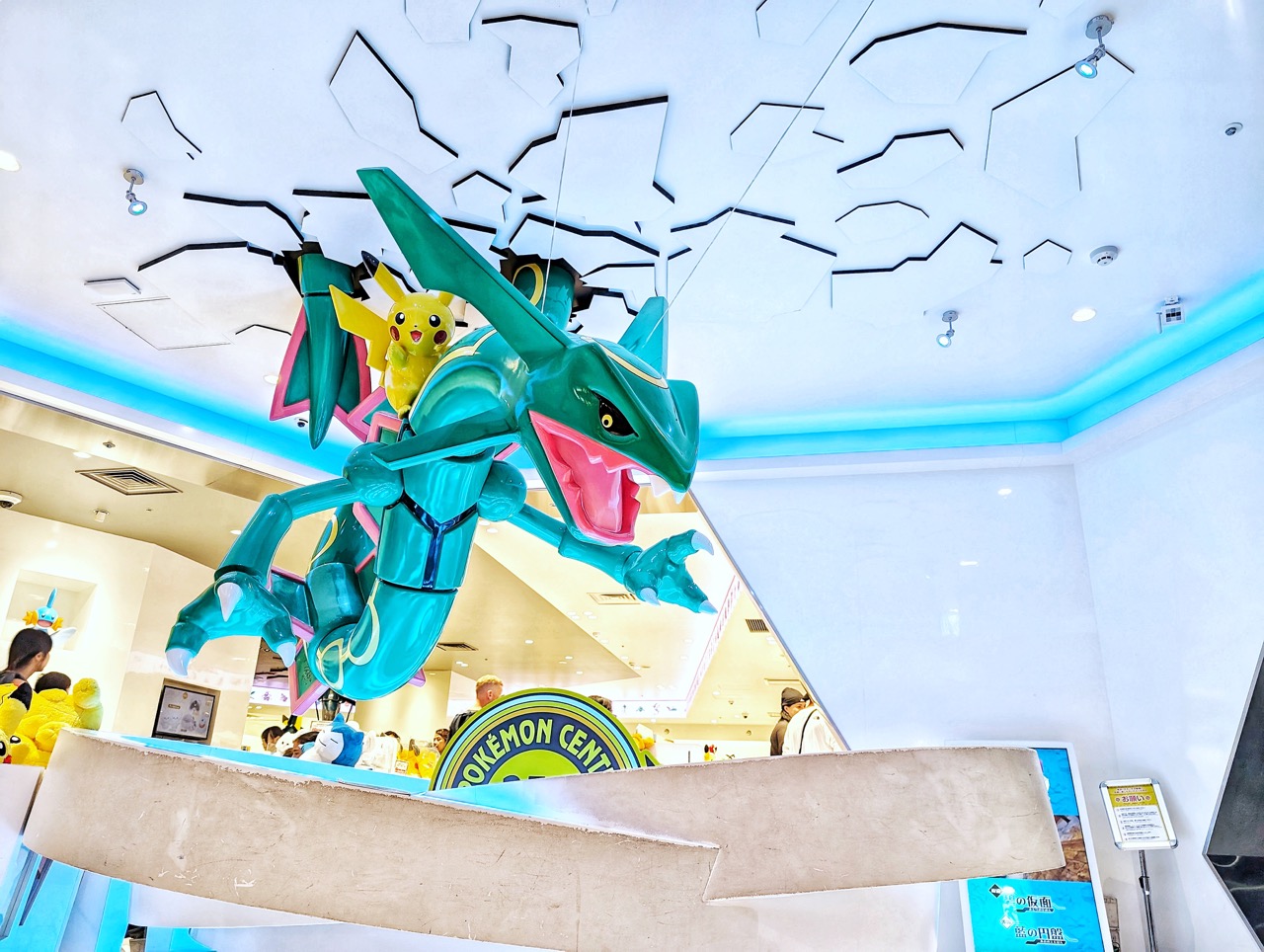
Running through my trip in chronological order, one of the first places I checked out was a Pokémon Center, an official store that exclusively sells Pokémon merchandise. Actually, on the trip overall, I ended up going to five of the 16 locations in Japan (according to Bulbapedia). I would say that was overkill since the stores are mostly the same, but the locations I visited were close to other attractions on my schedule anyway, so a few quick pop-ins were no problem and a natural part of my trip’s flow. (Also there’s no way I wasn’t going to visit every Pokémon Center possible.)
It’s worth checking out at least one or two of them, though: They offer exclusive merch you can’t get anywhere else, and the stores are well-designed and nicely presented, cultivating an atmosphere that made my childhood heart happy. Taking photos with the store’s giant statues (each location has different ones) is a fun touristy thing to do, too, and they’re just a neat thing to see.
The Nintendo Store experience is similar (I went to two of them), but swap out Pokémon for Mario.
Akihabara
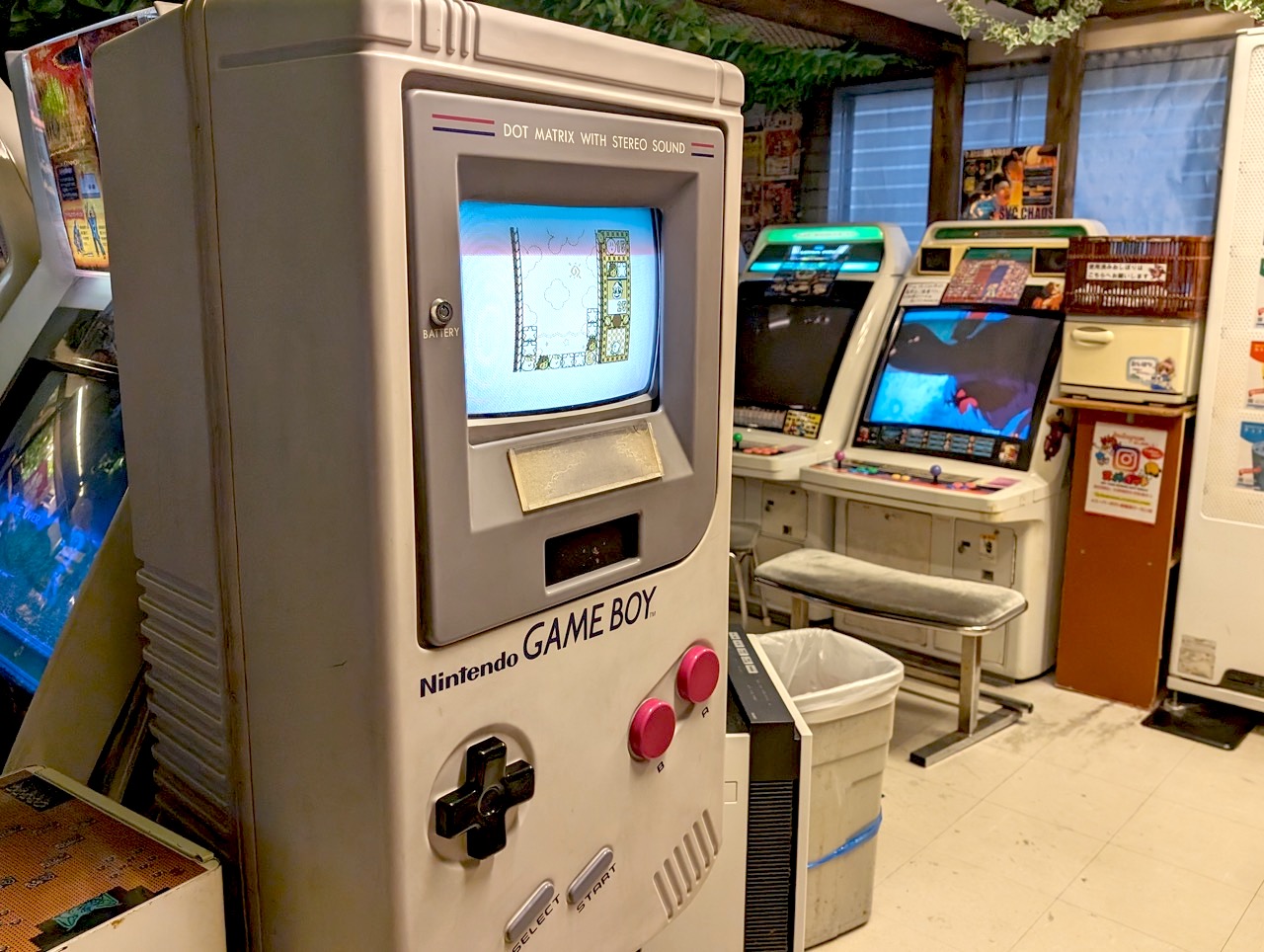
Akihabara is always one of the first places that comes up on lists and online discussions about things for gamers to do in Tokyo: It’s a neighborhood in the city that’s best known for its many stores catering to fans of games, manga, anime, and similar interests.
My main goal for my time in Akihabara was to do some retro game shopping. Unfortunately for buyers, shop owners in the area are clearly aware that they’re in a tourist destination, so prices aren’t the cheapest. Still, it’s fun to poke around the stores and see things that you won’t often find outside of Japan.
Super Potato, with its floors of vintage merchandise and even some free-to-play arcade games, was a particular highlight. Before my trip, an acquaintance from Japan noted he found Super Potato to be similar to an early Japanese arcade; The country’s first arcades in the late ’70s and early ’80s were a little makeshift, with buildings not originally designed for gaming purposes filled with game cabinets to capitalize on the sudden popularity of titles like Space Invaders and Xevious. That was sort of the feel of the Super Potato arcade floor, so it’s worth checking out for fans of arcade culture and its history.
I didn’t buy much, but I did get inexpensive copies of Space Invaders for PC Engine (the card was small with nice art, and I wanted something little to commemorate Japanese arcade history) and Mahjong for Game Boy (to commemorate watching mahjong on TV in our hotel room).
84 Hashi
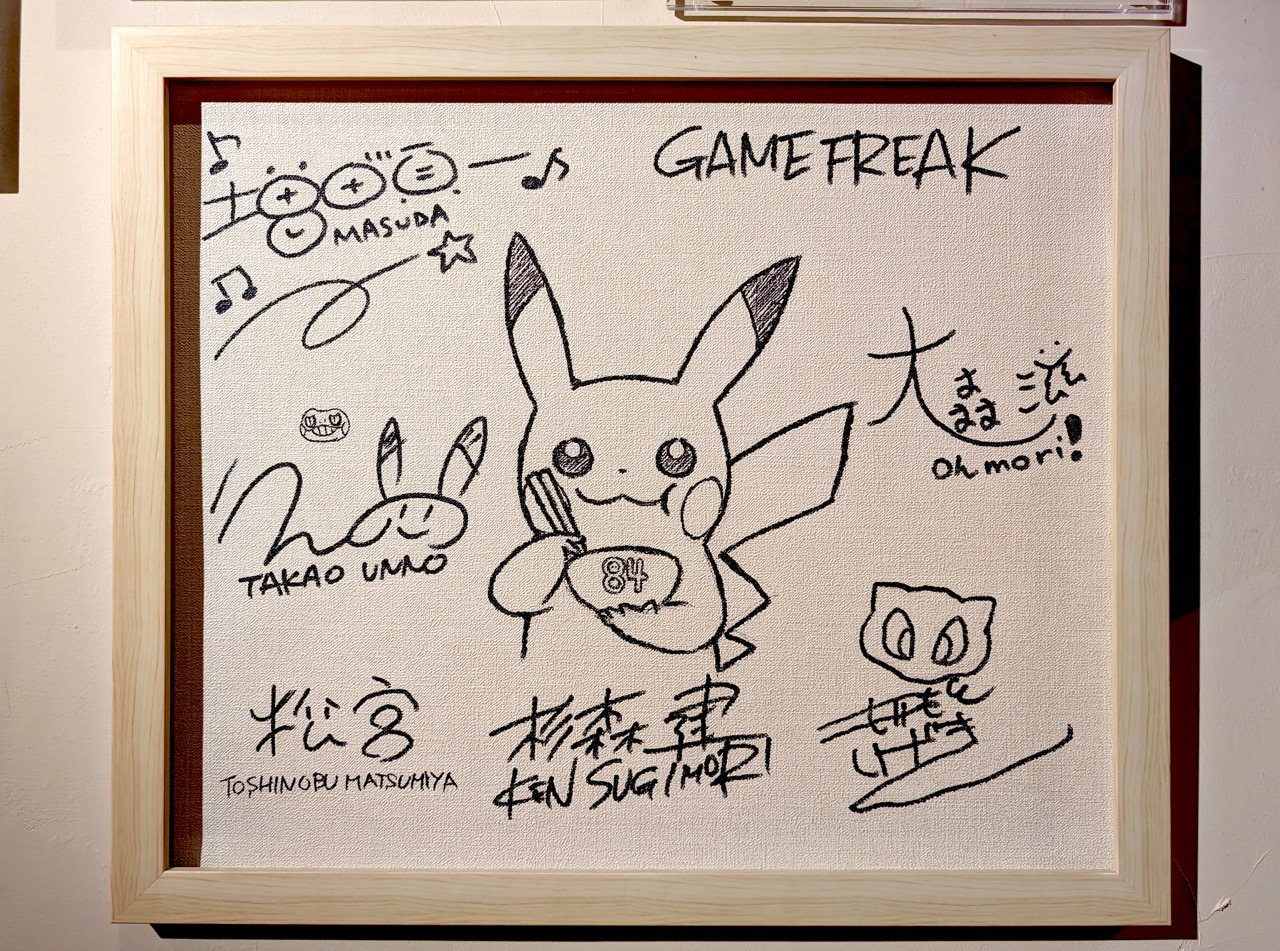
Speaking of gaming history: If you’re a fan (especially of Nintendo history), 84 (also known as “84 Hashi” or “Hashi”) is my most enthusiastic recommendation.
84 was originally a members-only cafe run by Toru Hashimoto (aka Chokan), a former Nintendo employee who contributed to games like Pokémon Red and Green, Yoshi’s Island, and many others. 84 started as a spot for Chokan’s game developer peers to hang out, and now anybody can book a tour.
It’s quite the place to look around, too. It’s an intimate space, but it’s filled with all sorts of unique memorabilia; Handwritten and signed sheet music from Koji Kondo and a Pikachu illustration signed by Game Freak employees especially caught my eye. 84 is a loving tribute to video game history from a man who is part of it, and to be surrounded by that energy makes it a special place. Having the opportunity to chat with somebody who worked on the original Pokémon games and ask what those times were like was a particular thrill.
(Nintendo Life published an informative feature about 84 in 2023 if you want to learn more.)
Serigaya Park
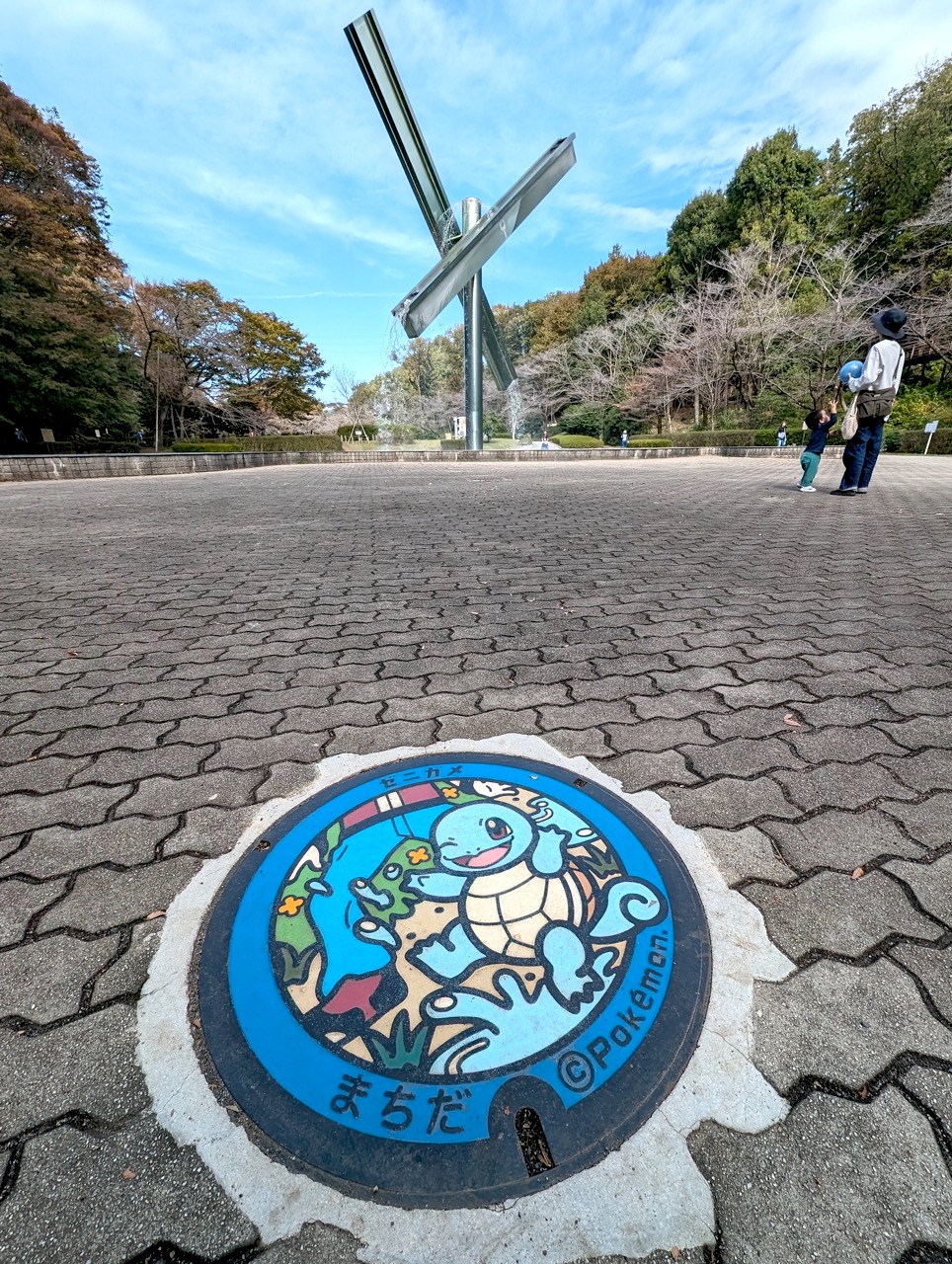
This one is only for hardcore Pokémon fans: Machida is where Pokémon creator Satoshi Tajiri grew up, and in that city is Serigaya Park. Throughout Japan, there are Poké Lids (Pokémon-themed utility hole covers), but since Machida is a key location in Pokémon history, there’s a concentration of them in Serigaya Park.
Machida is only about a 30-minute train ride from Tokyo, and it was mostly on our way from Tokyo to Kyoto (it did add about an hour of train time to the voyage). Still, it was an easy pit stop to make, especially since the park isn’t a long walk from Machida Station.
Seeing the lids was neat and the park itself was nice, but both were just an excuse to visit what is essentially the birthplace of Pokémon, which was a moving experience for me. As a young boy, Tajiri spent a lot of time studying and catching bugs, perhaps even snagging some beetles in Serigaya Park. These experiences were a primary inspiration behind Pokemon, so to spend some time in the city where those moments happened made me feel close to the history of the games I love in a way I never thought I’d get to enjoy.
If nothing else, stopping off in Machida was an opportunity for a quick glimpse at what Japan is like outside of its major cities. Whether it’s Machida or another lesser-known area, taking a step away from Japan’s most-visited places offers worthwhile perspective.
Go Kart Street Tour
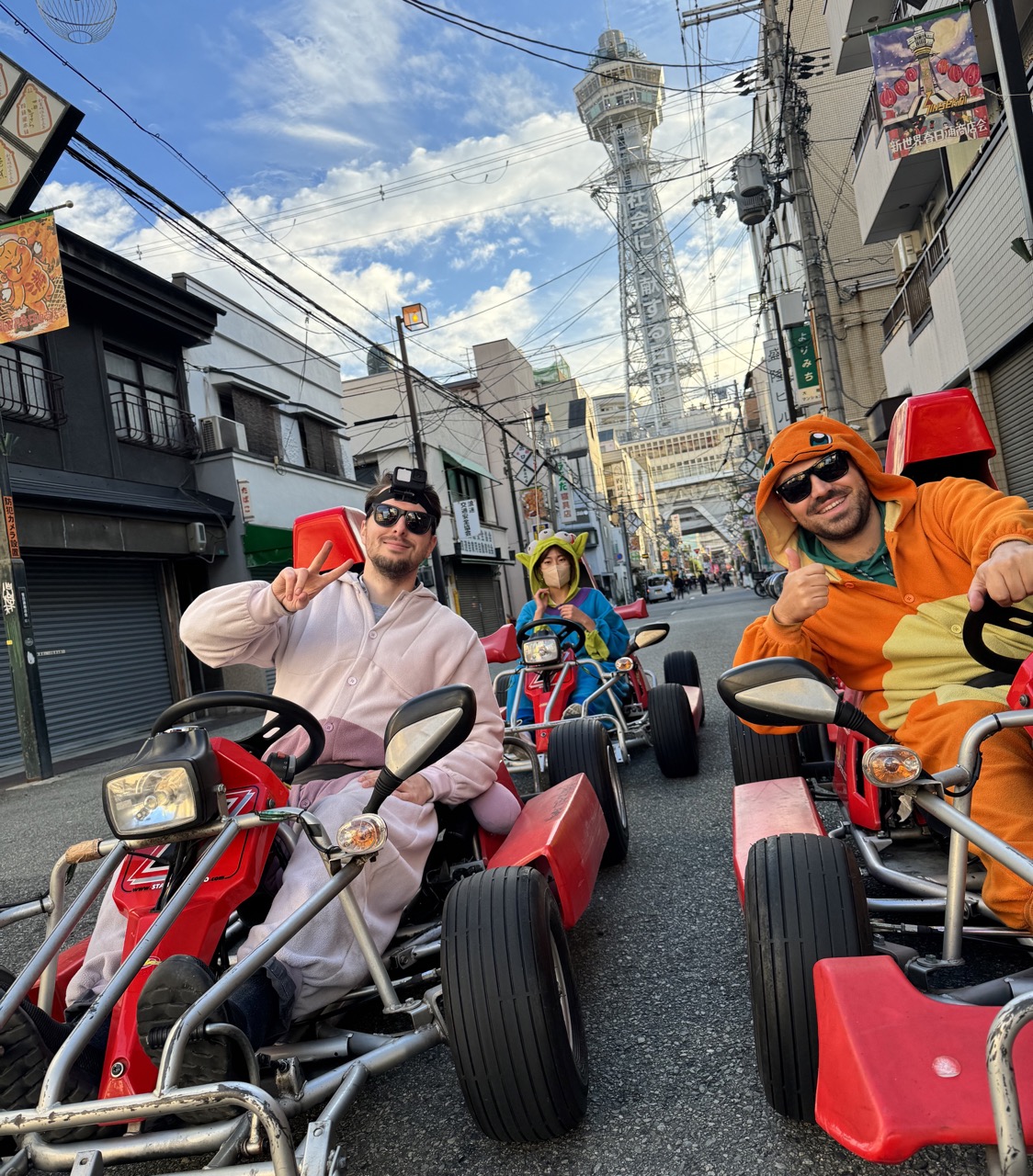
Mario Kart is rooted in reality in the sense that go kart racing exists, but that’s about it. (Also, I throw dangerous items out of the car while driving.) It’s not something you can experience in real life, but I got the closest I probably ever will during my Osaka day trip.
We booked a go kart tour from Akiba Kart Osaka, and it was for real: Before heading to Japan, we actually had to get international driving permits (an easy and inexpensive process). They were necessary because this tour puts you in gas-powered karts on active city streets, free to get pancaked by the full-sized vehicles driving next to you. To make the experience more video-game-like, they also offer a selection of onesie character costumes to wear during the hour-long tour (but no Mario outfits, presumably to avoid the iron fist of Nintendo’s legal department). I was Mewtwo (come and get me, Pokémon‘s legal department).
The Akiba Kart Osaka website claimed we’d be the “center of attention” and would “taste a little bit of fame” during the tour. That initially seemed like self-promotional exaggeration, but they weren’t wrong. Passerssby really did seem to light up as they saw us driving, especially young children who were wowed by the sight of costumed tourists zooming down the street.
The tour was just good clean fun. Furthermore, especially since we were only spending one day in Osaka, it was an effective way to see a lot of the city in a short amount of time, making it an easy recommendation.
(I witnessed a similar go kart tour one day in Tokyo as well, so you might be able to find something similar to the tour I went on regardless of where your Japan travels take you.)
Unplugging
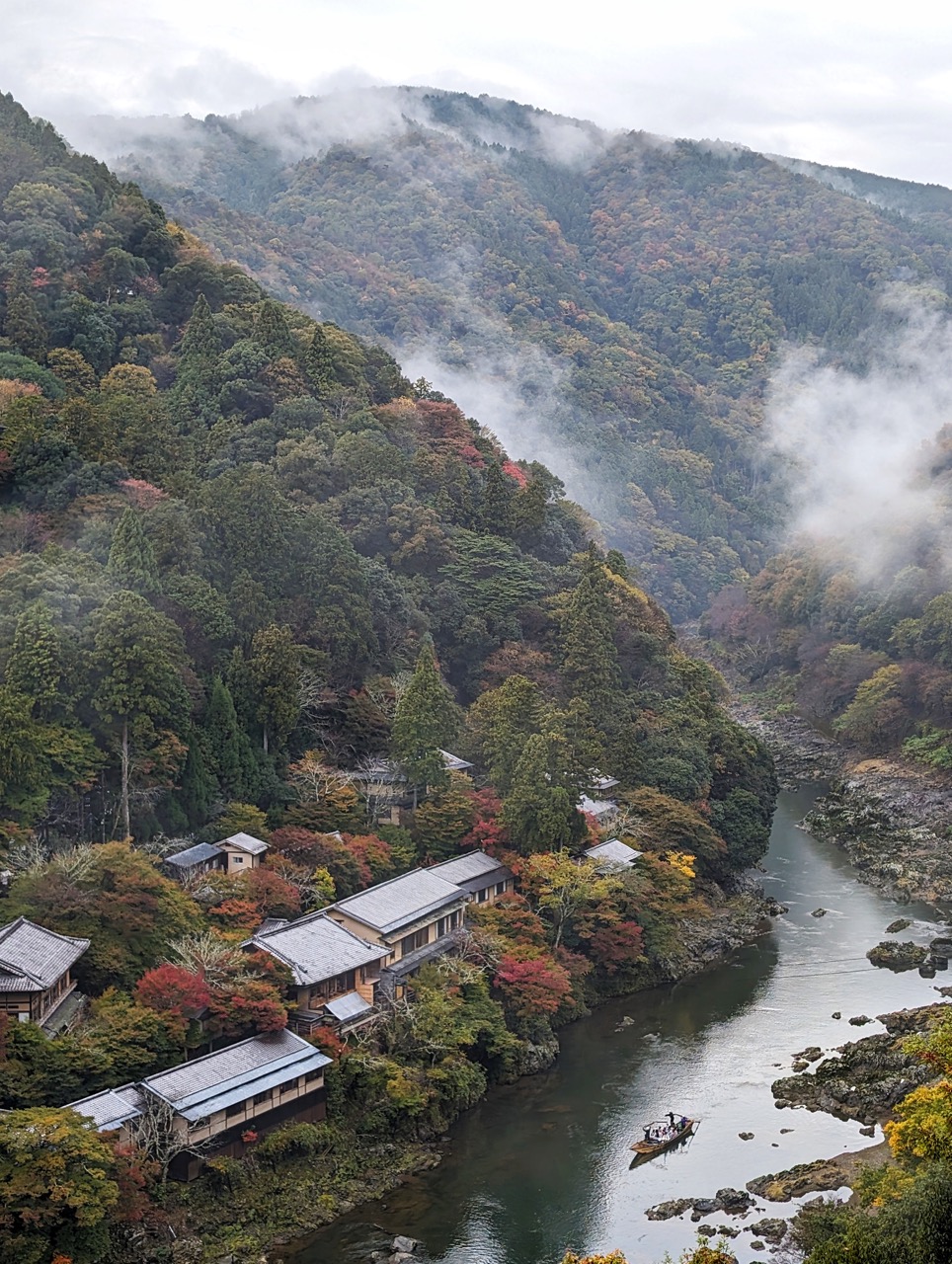
Seeing culturally significant places and other local attractions that aren’t directly game-related should be a priority for gamers. Japan’s rich history and modern culture are worth exploring on their own merits, but keeping with the theme of this article, they also offer valuable context about your favorite games. Learning more about the places where art is made and the daily lives its creators live can be eye-opening.
Specific example: When in Kyoto, my cousin pointed out how the historical buildings reminded him of Pokémon Gold and Silver; The fictional Johto region of those games was inspired by Japan’s Kansai region, which includes Kyoto. Seeing the real-life basis of a fictional world I’ve spent hours exploring since childhood made me appreciate both places so much more than I ever had before.
